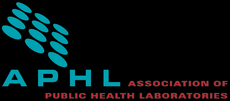---
The city that never sleeps – that’s what they say about New York City.
---
|
The city that never sleeps – that’s what they say about New York City. James was determined to take advantage of the energy in NYC to rejuvenate during his summer break after his first year at college as an undeclared science major. He had arrived at his Aunt Lynn’s apartment in the Bronx two weeks ago. His first week in the Big Apple was a blur. He spent a lot of time walking around the neighborhood and explored as much as he could while she was at work. James wanted to spend his summer sightseeing and taking in all that the City could offer.
Two days ago, those plans went south. It started with a bad headache. James went to bed early, feeling achy and chilled. The next day, he stayed in bed. He was feverish and started to cough. What a terrible time for a bad cold, he thought. But this felt worse than any cold he’d ever experienced. “You feeling OK? I have dinner ready”, Lynn said as she slowly opened the door to James’ bedroom. James pulled the covers up to his chin and coughed. “I don’t think so… my head is throbbing, I am hot and cold at the same time, and I feel like someone is sitting on my chest”. Lynn felt his forehead. “You are burning up! I think we better get you to a doctor, sweetie.” James didn’t argue. They were quickly on their way to the local hospital ER. Dr. Johnson had seen three other patients over the last week come into her ER with symptoms similar to James’. She ordered a chest x-ray, and saw the characteristic blurriness. “You have pneumonia, James. It is good that you came in when you did. You are going to need to spend some time here until your fever improves and your pneumonia starts to resolve,” said Dr. Johnson as she sat down next to his hospital bed. “There are many types of pathogens (http://www.cdc.gov/abcs/pathogens/pathogen-links.html) that can cause this type of illness.” She continued, “To diagnose you and get you on the right treatment, I need to run a few lab tests. I’ll need a urine sample, and a sputum sample for culture.” James joked, “Just patch me up quickly so I can actually have a summer break!” Dr. Johnson ordered panel of tests to screen for the common culprits - Streptococcus pneumoniae, Mycoplasma pneumoniae, Chlamydophila pneumoniae , and respiratory viral pathogens. Based on the notice she had recently received from the New York City Health Department about a possible outbreak of Legionnaire’s disease, she also ordered a Legionella Urine Antigen Test. Dr. Johnson was aware of a handful of people that had been diagnosed with Legionnaire’s over the past couple of weeks, and she had heard that most cases could be linked to the Bronx. The bacteria that causes Legionnaire’s disease, Legionella pneumophila, is associated with certain water sources such as cooling towers, hot tubs, and fountains. People become ill after inhaling water aerosols contaminated with the bacteria. In response to the outbreak, the NYC Health Department was performing environmental testing of cooling towers from buildings in the Bronx… right where James spent his first week exploring. Just as Dr. Johnson suspected, James’s urine antigen test came back positive, confirming infection with Legionella, and a few days later, the microbiology lab at the Health Department confirmed that James’ sputum sample had grown the Legionella bacteria. James was already on treatment for community-acquired pneumonia and was recovering quickly. His x-rays showed improve- ment and his temperature had remained normal. He could breathe without pain and was eager to leave the hospital. Dr. Johnson contacted the NYC Health Department to officially report the new Legionnaire’s disease case. The Health Department was performing specialized testing that could be used to link cases, to try to identify all possible point sources in the outbreak. Testing included serogrouping using a direct fluorescent antibody test, pulsed field gel electrophoresis (PFGE) and sequence-based typing (SBT). Staff in the NYC public health lab worked closely with state epidemiologists to show that the Legionella bacteria cultured from James was the same serogroup, SBT, and PFGE type as others isolated from a cooling tower near a park that James spent time in during his first week in NYC. Over the next couple of weeks, reports of Legionnaires continued to emerge, and stories about the outbreak were a hot topic in the news. Back at Aunt Lynn’s home, after a couple of weeks on antibiotics, James was feeling like himself again. There was one positive outcome from James’ experience. After reading more about the work of the public health professionals that helped solve the mystery of the Legionella outbreak, he decided that he wanted to pursue a career working in a public health lab, running the tests that helped to diagnose him and working as a ‘disease detective’. James had another few weeks to enjoy NYC before returning to campus for the fall semester. Reflecting on his experience in the Big Apple - it had not been the best summer of his life, but he would definitely have a good story to tell. |


